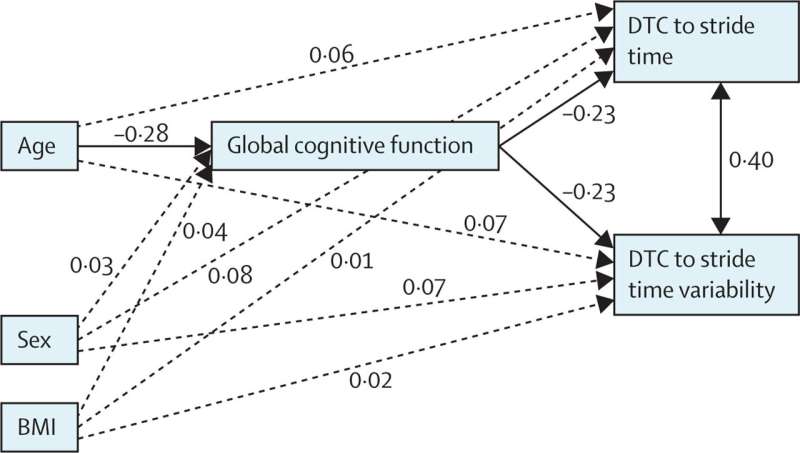
Turning a decades-old dogma on its head, new analysis from scientists at UC San Francisco and Stanford Medication displays that the receptor for oxytocin, a hormone thought to be very important to forming social bonds, would possibly not play the vital position that scientists have assigned to it for the previous 30 years.
Within the find out about, showing Jan. 27, 2023 in Neuron, the group discovered that prairie voles bred with out receptors for oxytocin and confirmed the similar monogamous mating, attachment, and parenting behaviors as common voles. As well as, ladies with out oxytocin receptors gave start and produced milk, regardless that in smaller amounts, than abnormal feminine voles.
The consequences point out that the biology underlying pair bonding and parenting is not purely dictated through the receptors for oxytocin, from time to time known as the “love hormone.”
“Whilst oxytocin has been thought to be ‘Love Potion #9,’ it sort of feels that potions 1 via 8 could be enough,” mentioned psychiatrist Devanand Manoli, MD, Ph.D., a senior creator of the paper and member of the UCSF Weill Institute for Neurosciences. “This find out about tells us that oxytocin is most probably only one a part of a a lot more advanced genetic program.”
CRISPR voles pack a wonder
As a result of prairie voles are one of the vital few mammalian species recognized to shape lifelong monogamous relationships, researchers find out about them to raised perceive the biology of social bonding.
Research within the Nineties the usage of medication that save you oxytocin from binding to its receptor discovered that voles had been not able to pair bond, giving upward push to the concept the hormone is very important to forming such attachments.
The present venture emerged from shared pursuits between Manoli and co-senior creator and neurobiologist Nirao Shah, MD, Ph.D., then at UCSF and now at Stanford Medication. Shah were within the biology of oxytocin and social attachment in prairie voles since instructing in regards to the oxytocin research many years previous. Manoli, who sought after to research the neurobiology of social bonding, joined Shah’s lab in 2007 as a postdoctoral student.
For this find out about, 15 years within the making, the 2 carried out new genetic applied sciences to verify if oxytocin binding to its receptor used to be certainly the issue at the back of pair bonding. They used CRISPR to generate prairie voles that lack practical oxytocin receptors. Then, they examined the mutant voles to peer whether or not they might shape enduring partnerships with different voles.
To the researchers’ wonder, the mutant voles shaped pair bonds simply as readily as commonplace voles.
“The patterns had been indistinguishable,” mentioned Manoli. “The most important behavioral characteristics that had been regarded as depending on oxytocin—sexual companions huddling in combination and rejecting different attainable companions in addition to parenting through moms and dads—seem to be totally intact within the absence of its receptor.”
Hard work and lactation
Much more sudden for Manoli and Shah than the pair bonding used to be the truth that an important proportion of the feminine voles had been ready to provide start and supply milk for his or her puppies. Oxytocin is prone to have a job in each start and lactation, however one this is extra nuanced than prior to now idea, Manoli mentioned. Feminine voles with out receptors proved completely in a position to giving start, at the similar time frame and in the similar manner because the common animals, although hard work has been idea to depend on oxytocin.
The consequences lend a hand to transparent up one of the crucial thriller surrounding the hormone’s position in childbirth: Oxytocin is recurrently used to urge hard work however blockading its task in moms who revel in untimely hard work is not higher than different approaches for halting contractions.
When it got here to generating milk and feeding puppies, alternatively, the researchers had been bowled over. Oxytocin binding to its receptor has been thought to be very important for milk ejection and parental maintain many many years, however part of the mutant ladies had been ready to nurse and wean their puppies effectively, indicating that oxytocin signaling performs a job, however it’s much less important than prior to now idea.
“This overturns typical knowledge about lactation and oxytocin that is existed for a for much longer time than the pair bonding affiliation,” mentioned Shah. “It is a same old in clinical textbooks that the milk letdown reflex is mediated through the hormone, and right here we say, ‘Wait a 2d, there is extra to it than that.'”
Manoli and Shah occupied with figuring out the neurobiology and molecular mechanisms of pair bonding as a result of it’s idea to carry the important thing to unlocking higher remedies for psychiatric prerequisites, reminiscent of autism and schizophrenia, that intrude with an individual’s talent to shape or take care of social bonds.
Over the last decade, a lot hope used to be pinned on medical trials the usage of oxytocin to deal with the ones prerequisites. However the ones effects had been combined, and none has illuminated a transparent trail to development.
The researchers mentioned their find out about strongly means that the present style—a unmarried pathway or molecule being liable for social attachment –is oversimplified. This conclusion is smart from an evolutionary viewpoint, they mentioned, given the significance of attachment to the perpetuation of many social species.
“Those behaviors are too essential to survival to hinge in this unmarried level of attainable failure,” mentioned Manoli. “There are possibly different pathways or different genetic wiring to permit for that conduct. Oxytocin receptor signaling might be one a part of that program, however it isn’t the be-all end-all.”
The invention issues the researchers down new paths to bettering the lives of other people suffering to seek out social connection.
“If we will be able to in finding the important thing pathway that mediates attachment and bonding conduct,” Shah mentioned, “We’re going to have an eminently druggable goal for easing signs in autism, schizophrenia, many different psychiatric problems.”
Additional information:
Devanand S. Manoli, Oxytocin receptor isn’t required for social attachment in prairie voles, Neuron (2023). DOI: 10.1016/j.neuron.2022.12.011. www.cellular.com/neuron/fulltext/S0896-6273(22)01084-4
Quotation:
Contemporary questions on oxytocin because the ‘love hormone’ at the back of pair bonding (2023, January 27)
retrieved 30 January 2023
from https://medicalxpress.com/information/2023-01-fresh-oxytocin-hormone-pair-bonding.html
This report is topic to copyright. Aside from any honest dealing for the aim of personal find out about or analysis, no
phase could also be reproduced with out the written permission. The content material is equipped for info functions most effective.
Supply Through https://medicalxpress.com/information/2023-01-fresh-oxytocin-hormone-pair-bonding.html



